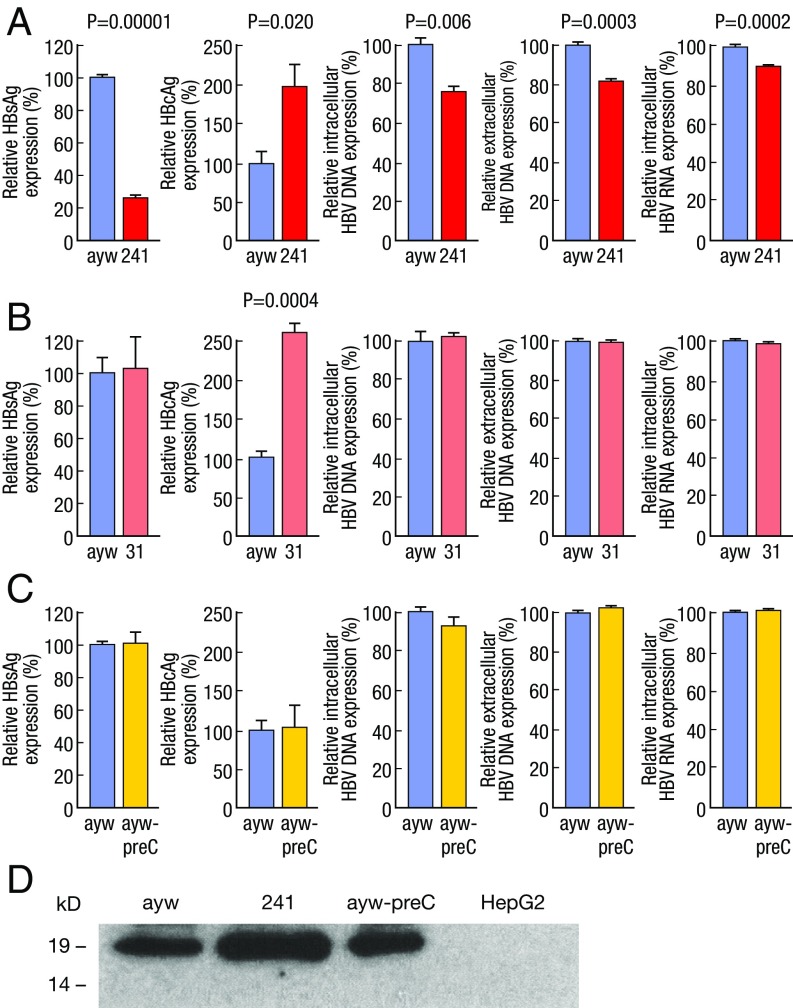Fig. 2.
Quantitative analysis of viral replication and antigen expression by patient-derived HBV variants versus wild-type HBV. HepG2 cells were transfected with monomeric linear full-length HBV genomes of wild type (ayw) (21), two HBV variants cloned from two patients with ALF (241 and 31), and the wild-type HBV mutant containing the single preC stop mutation (ayw-preC). The level of intracellular and extracellular HBV DNA and the level of total RNA were determined by real-time PCR and the level of HBsAg and HBcAg expression was measured by ELISA. Relative level of HBsAg in the culture supernatants, cellular HBcAg, intracellular and extracellular viral DNA, and total RNA of (A) wild-type HBV (ayw) versus 241 HBV, (B) wild-type HBV (ayw) versus 31 HBV, or (C) wild-type HBV (ayw) versus the preC mutant. Values were normalized to those obtained with the wild-type HBV and presented as percentage of expression. The data are the mean from three independent experiments with SE. The significance in difference was evaluated by unpaired two-tailed t test. The concentration of HBcAg in patient-derived ALF HBV variants (241 and 31) was significantly higher compared with that measured for the reference ayw strain, whereas no significant difference was detected between ayw and ayw-preC. (D) Western blot analysis of HBcAg expression in cells transfected with different HBV variants after immunoprecipitation with homologous anti-HBc antibodies. The patient-derived 241 HBV produced higher levels of HBcAg than the reference HBV strain or ayw-preC.

